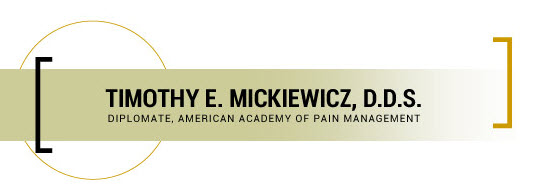
From right here in Sacramento, Dr. Timothy E. Mickiewicz is at the front of the search for safe and effective pain management treatments. As a member of the Academy of Integrative Pain Management (AIPM), Dr. Mickiewicz is part of a community of healthcare professionals from more than 30 different disciplines who use a variety of appropriate therapeutic approaches to help patients diminish pain and speed healing. The community looks to treat each patient as a unique individual, knowing that one-size-fits-all isn’t the right approach to pain management.
The Opioid Epidemic
Pain management is a rapidly growing area of research, and one that is now receiving much public attention; physicians and other health care providers are looking for new approaches to pain management due to the United States’ opioid abuse and addiction epidemic. Health care professionals around the country, like those in the Academy of Integrative Pain Management, are collaborating to determine safe, effective approaches to reducing chronic pain. They’re testing alternative therapies, holistic options, and burgeoning fields of technology. The AIPM and many other physicians understand that by providing alternative pain management methods to patients, health care professionals can dramatically reduce patients’ reliance on opioids for pain management, which in turn can change the course of the devastating opioid crisis.
Pain-Free Living is Possible
If you are suffering from painful symptoms of TMD or chronic migraines, Dr. Mickiewicz can help. Dr. Mickiewicz is a leader in the field of orofacial and dental pain management, and has helped thousands of patients regain health and happiness by helping them live pain-free through a variety of treatments. Contact our Sacramento office to schedule your consultation by calling 916-469-9178.
Opioid Alternatives
Nearly 30 percent of patients who are prescribed opioids for pain management will abuse them. The Center for Disease Control estimates that each year opioid abuse in the United States costs more than 78 billion dollars. This figure includes the mounting health care costs, lost productivity for our economy, as well as legal and addiction treatment costs. Drastic steps need to be taken to stop the opioid epidemic and change the way health care professionals and patients approach pain management.
Today, a combination of alternative therapies — based on an individual’s unique condition — may be the best way for health care providers to proactively decrease opioid dependence.
Alternative therapies may include:
Physical therapy and massage: A hands-on approach to pain management can be effective for certain muscular or nerve conditions. Massage techniques manipulate or increase circulation in muscle tissue while decreasing inflammation. Certain exercises or stretching routines as part of a physical therapy program can strengthen muscles and improve flexibility, helping the body to speed healing after an injury or accident.
Acupuncture: Acupuncture is an ancient Chinese practice that involves inserting thin needles at certain points across the body. Some patients find significant pain relief from regular acupuncture therapy, possibly because stimulation from the needle causes the brain to release beta-endorphins. These chemicals function as natural pain killers, lowering pain thresholds. It’s also been theorized that acupuncture practice may permanently change connective tissues around pressure points to reduce inflammation and pain long-term.
Relaxation training or biofeedback: Biofeedback involves training patients to recognize and monitor their own phsyiologoical processes. In response to the body’s physiological state, mindfulness, relaxation, or even self-hypnosis techniques can alter their perception of pain.
Surgery: If the source of pain is from abnormalities in the body that can be corrected, surgery may be the best long-term solution. With early corrective action, treatment for symptoms would no longer be needed.
Radio waves: Another technique involves radiofrequency ablation. This process involves inserting a needle close to a nerve causing pain. The needle then transfers an electric radio wave current to burn the nerve, stopping it from transmitting pain signals to the brain. While not a permanent form of relief, symptoms can be diminished for over a year.
Nerve blocks: Using x-ray diagnostics, physicians can detect the group of nerves (called a “plexus”) that is responsible for a patient’s chronic pain. Once located, they inject “nerve-blocking,” numbing medication to reduce or eradicate pain from a certain organ or area of the body. Ongoing treatment of a series of injections may be needed to provide continued pain management.
Promising research: Stem cell research remains one of the most important research areas for pain management. Researchers hope that by harvesting a patient’s stem cells from healthy bone marrow tissue, they can inject them into areas of deteriorated tissues that cause chronic pain. Stem cells may be able to eliminate pain by replacing old tissues with healthy, new ones.
Contact Us
If you’re living with chronic dental or orofacial pain in the Sacramento area, Dr. Mickiewicz can help you reduce your symptoms through one or more treatment options. Schedule an appointment with Dr. Mickiewicz by calling us at 916-469-9178.


